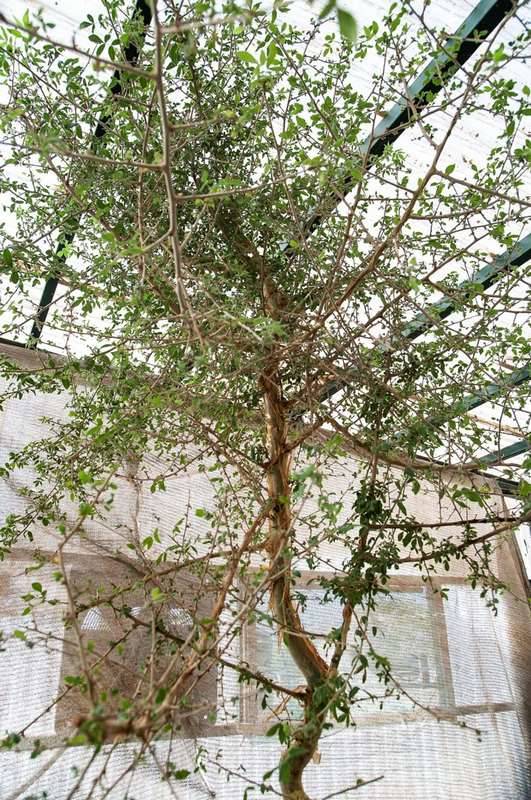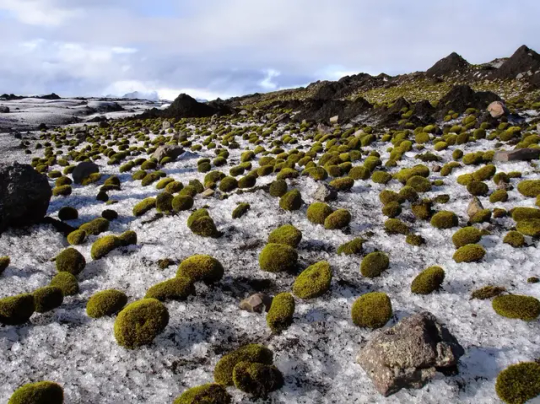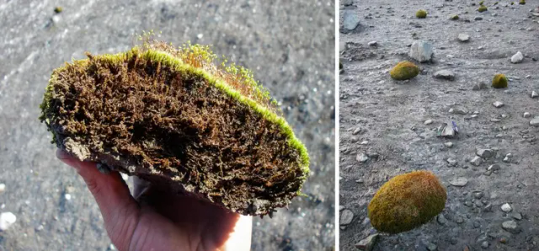disgraced former landscape architect ranting about stormwater management // main @aliensexdream
Don't wanna be here? Send us removal request.
Text
I love when you post a species on inat and seconds later someone called "salamandergirl" "solidagoman" or "troutlilly_identifier" swoops in to ID it. Like yeah, you know what youre about. I trust your ID of my Bombus bimaculatus, "bombusboy200"
36K notes
·
View notes
Text
i hate that concerns about urban gardening/foraging safety is often met with "What are you, a cop?" scorn. I believe it's a suspicion of anything that hinders the punk/anti-system urgency to jump in immediately and do whatever feels right.
Safety, ethics, and sustainability are all a part of urban gardening and foraging. I'm sorry that means you need to do homework before you can do anything, I know that sounds lame. But life is complicated.
I know anti-intellectualism is viewed as activist these days, but like, surely you don't want to literally eat lead, right?
5K notes
·
View notes
Text
i say this in all seriousness, a great way to resist the broad cultural shift of devaluing curiosity and critical thinking is to play my favorite game, Hey What Is That Thing
you play it while walking around with friends and if you see something and don't know what it is or wonder why its there, you stop and point and say Hey What Is That Thing. and everyone speculates about it. googling it is allowed but preferably after spending several minutes guessing or asking a passerby about it
weird structures, ambiguous signs, unfamiliar car modifications, anything that you can't immediately understand its function. eight times out of ten, someone in the group actually knows, and now you know!
a few examples from me and my friends the past few weeks: "why is there a piece of plywood sticking out of that pond in a way that looks intentional?" (its a ramp so squirrels that fall in to the pond can climb out) • "my boss keeps insisting i take a vacation of nine days or more, thats so specific" (you work at a bank, banks make employees take vacation in long chunks so if youre stealing or committing fraud, itll be more obvious) • "why does this brick wall have random wooden blocks in it" (theres actually several reasons why this could be but we asked and it was so you could nail stuff to the wall) • "most of these old factories we drive past have tinted windows, was that just for style?" (fun fact the factory owners realized that blue light keeps people awake, much like screen light does now, so they tinted the windows blue to keep workers alert and make them work longer hours)
been playing this game for a long time and ive learned (and taught) a fuckton about zoning laws, local history, utilities (did you know you can just go to your local water treatment plant and ask for a tour and if they have a spare intern theyll just give you a tour!!!) and a whole lot of fun trivia. and now suddenly you're paying more attention when youre walking around, thinking about the reasons behind every design choice in the place you live that used to just be background noise. and it fuckin rules.
66K notes
·
View notes
Text
*tamp tamp*
ah i see youve noticed me tamping down the soft earth
280K notes
·
View notes
Text
"During an archaeological dig in a desert area north of Jerusalem 40 years ago, a seed was discovered which was determined to be in pristine condition but had obviously seen many a year.
Now, despite falling from its parent 1,000 years ago, it has grown into a mature tree, and botanists examining it believe it may be an extinct species that was used for medicinal purposes for thousands of years—even receiving a nod in the Bible.
Neither Israeli botanists, nor Dr. Sarah Sallon, a physician who founded the Louis L. Borick Natural Medicine Research Center at Hadassah University Medical Center in Jerusalem, could determine what species it was from simply from the seed covering. So they did what nature intended—they planted it.
Using a well-documented technique that saw 2,000-year-old date palm fruit pits germinate, Dr. Sallon soaked the seed in hormones, liquid fertilizer, and water, and then planted it in a pot of sterile seed; then waited.
Despite its genetic code being exposed to environmental stressors for over 1,000 years, the seed sprouted after 5 weeks. The shoot was protected by a caplike feature called an operculum. As the shoot grew, the operculum was shed—leaving something for the team to radiocarbon date. It narrowed down the age of the almost 10-centuries-old seed to between the years 993 an 1202.
Fast forward 14 years and the plant has become a 10-foot-tall tree. Dr. Sallon shared images of the tree, its bark, and its leaves with botanists around the world. One expert suggested it belonged to the genus Commiphora, found across the Arabian Peninsula and parts of Africa. A genetic analysis subsequently revealed this was the case, but a perfect match was lacking.

Pictured: The tree, now 14 years old.
Dr. Sallon and her team thought it was an extinct species known from history as Judean Balsam, but the best way to confirm that suspicion would be to have some aromatic traces similar to the resins of the myrrh tree to which it is related. However, no such fragrant compounds were detected.
Instead, the chemical analysis of the leaves identified a group of phytochemicals known as guggulterols which have been observed in a related species called Commiphora wightii that’s known to possess certain cancer-fighting properties in its resin.
A medicinal balm, the origin of which is not known, is mentioned in multiple historical texts including the Bible as ‘tsori,’ and rather than the fragrant Judean Balsam, it’s this tsori that Dr. Sallon and her team believe they have found.
They must wait until the tree, now 14 years old, produces flower or fruit to know for sure if it’s an extinct species, and if so, how to perhaps keep it alive.
Dr. Louise Colville, senior research leader in seed and stress biology at Royal Botanic Gardens, Kew, in London who wasn’t involved in the research, told CNN that it was a major accomplishment to grow a seed that old and possibly lead to a resurrection of this Biblical botanical.
“What’s surprising in this story is it was just a single seed and to be able to have one chance for that to germinate is extremely lucky,” she said.
“Working in a seed bank, seeing the potential for that extreme longevity gives us hope that banking and storing seeds that some at least will survive for very long periods of time.”"
-via Good News Network, October 8, 2024
--
Note: This is such a good demonstration of why seed banks are so important!! They give us such real and massive hope for deextinction and the revival of endangered species.
9K notes
·
View notes
Text
moss mfriday #3: Glacier Mice

[image credit]
That's right - it's glacier mice. One of my favorite things maybe on the entire planet. Let's talk about these freaky fuzzy little rats!!
Glacier mice are balls of moss that live in large herds like this in a few select glaciers. They are moss all the way through, with a center consisting of dead moss matter, implying that they begin as small growths of moss and simply accumulate over time, like snowballs. However, their outside surface is alive and well on all sides. Glacier mice have been observed, through tagging and tracking, to roll across the glacier like a majestic herd of wildebeest, exposing all of their sides to the sunlight. They trundle along at a pace of about 2.5 cm per day. That's 30 feet in a year! They're really schmovin'! Certainly further than most mosses can claim to travel.
What's really exciting, though, is that they all move in the same direction, and we're not sure why or how. Scientists experimented to try and attribute their coordinated behavior to wind, sunlight, and the direction that their grazing ground slopes, but to no avail. They speed up, slow down, and change direction in unison, based on some mysterious moss code that we haven't cracked yet.

Cross-section of a glacier mouse. Note the dead moss matter inside, and the short gametophytes on the outside, adapted to harsh winds and sunlight. [image credit]
We have figured out how they roll, though - while the moss ball sits on the ice, it insulates the ice directly underneath it, protecting it from melting. This forms a little pillar of ice that the moss eventually rolls off of. The insulating power of glacier mice also gives it the wonderful ability to host all kinds of microorganisms that otherwise wouldn't survive the glacier's harsh conditions, and their ability to move makes it possible for microorganisms to spread from one habitable spot to another. They're like a bunch of little tardigrade passenger ships, braving the dangerous glacier to go where no water bear has gone before!!
Glacier mice have been found to consist of several moss species, most of which must reproduce asexually in order to survive in the dry climate. They've been observed to live for at least six years, but are projected to live much, much longer. I love them. So much. I hope they know that I love them!! I LOVE THEM!!!!
[source][source][source]
3K notes
·
View notes
Text






botanical garden I // heinrich heine university
completion: 1979
the botanical garden of the heinrich heine university is worth a visit at any time of year. but you should definitely bring time with you because the grounds are very extensive and you can and must explore them beyond the main paths and cross-country. but if your feet get heavy, there are plenty of places to rest. it is also a favourite place for university students to rest and study, as we found out. but it also borders directly on the university buildings so that you practically fall into it.
der botanische garten der heinrich heine universität ist zu jeder jahreszeit einen besuch wert. man sollte aber auf jedenfall zeit mitbringen den die anlage ist sehr weitläufig und man darf und muss sie auch zum teil jenseits der hauptwege und querfeldein erkunden. wenn die füße aber schwer werden gibt es genug plätze um sich auszuruhen. auch für die studierenden der universität ist es ein beliebter ruhe- und lernort wie wir feststellen konnten. er grenzt aber auch direkt an die universitätsgebäude so das man quasi in ihn hineinfällt.
185 notes
·
View notes
Text



Plant of the Day
Friday 21 March 2025
Flowering in the woodland garden at Goodnestone Park, Kent, was a small flowered cultivar similar to Camellia japonica 'Beauty Blush'. These evergreen shrubs thrive in an acidic soil with plenty of organic matter but good drainage. Plants need light shade with shelter from cold winds.
Jill Raggett
83 notes
·
View notes
Text

https://www.abc.net.au/news/2020-08-22/food-plant-solutions-malnutrition-farming-edible-plants/12580732
https://fms.cmsvr.com/fmi/webd/Food_Plants_World
This guy is my new hero. I LOVE learning about native food plants that just grow everywhere without human help.
The database is a little clunky to use (especially on a phone), but still loads of excellent information.
106K notes
·
View notes
Text





Plant of the Day
Sunday 16 March 2025
Part of the Brassicaceae family alongside horseradish and mustard is Eutrema japonicum (wasabi, Japanese horse radish). This plant thrives in a cool (8-20°C), shady location with humidity to allow its leafy growth to flourish. This plant grows well in a Polycrub on Orkney producing the edible stems with a peppery, pungency when grated, along with edible leaves and flowers for salads.
Jill Raggett
104 notes
·
View notes
Text
I removed the paywall from this article (it's shared as a "gift'). This method looks promising for starting seeds without a ton of plastic waste, although in my opinion, it would be easier and cheaper to skip the branded gear and just make the soil blocks by hand. Anything is better than those awful plastic net starters like Jiffy sells, though. Just thought I'd share, since we're in seed starting season now.
94 notes
·
View notes
Text



Plant of the Day
Tuesday 4 March 2025
A great characteristic of Calamagrostis × acutiflora 'Karl Foerster' (feather reed grass) is that this ornamental grass continues to stand upright through the winter and catch the light. It is about time to cut back the old stems of this clump-forming deciduous perennial before the new foliage appears.
Jill Raggett
105 notes
·
View notes
Text


Fingal's Cave is a geological formation located on the uninhabited island of Staffa, in the Inner Hebrides of Scotland.
It is known for its extraordinary structure of hexagonal basalt columns, which were formed from rapidly cooled volcanic lava millions of years ago. The cave is approximately 72 meters long and is notable for its natural acoustics, giving it a cathedral-like quality.
14K notes
·
View notes
Text
Excerpt from this story from Anthropocene:
Call it the mystery of the invisible squirrels.
Shortly after Elizabeth Carlen arrived in St. Louis for job as a postdoctoral researcher at Washington University, the biologist posted a message on X, the social media site formerly known as Twitter.
“Wondering about bias in community science data? Here is an example from St. Louis,” she wrote. Then Carlen posted two maps. One showed the city’s stark racial segregation, with its northern half mostly black and southern half predominantly white. The other showed where sightings of Eastern gray squirrels had been recorded on the app iNaturalist, used by phone-wielding amateur naturalists to report their observations.
Judging by the app, there were virtually no squirrels in the city’s northern neighborhoods, something that Carlen, whose research focuses on how urbanization affects squirrels, knew wasn’t true. “Squirrels are abundant in the northern part of the city,” wrote Carlen. “But there are no recorded observations.”
Her insight spawned an online conversation among scientists, and now a peer-reviewed paper, about the blind spots and biases that can skew data gathered through informal amateur networks – often known as citizen science.
Citizen science has become an important part of biodiversity research – whether it’s volunteers collaborating directly with scientists to gather data, researchers tapping into apps like eBird or iNaturalist, or even people just posting pictures of wildlife on their Instagram feeds.
But as the St. Louis squirrels show, such data can produce results that have little to do with natural history and a lot to do with human society.
“We need to be very conscious about how we’re using this data and how we’re interpreting where animals are,” said Carlen, who is based at the university’s Living Earth Collaborative, which is dedicated to the study of biodiversity.
In the new paper, which Carlen co-wrote with 13 other scientists at institutions around the country, the scientists offer a cautionary road map of the ways in which bias can creep into such data gathering and the resulting picture of the natural world.
For starters, the data depends on who participates and where they are located. Observations from sites like eBird tend to be concentrated in cities and near roads, because that’s where the most people are, not because birds prefer it. Likewise, wealthier people are more likely to take part in citizen science, increasing the likelihood that data will come from where they live. Racial disparities – which can reflect social and economic inequities – have also emerged in citizen science, with white participants overrepresented relative to people of color.
Then there are the different ways people discriminate towards the organisms they are spotting or where they go looking for them. Reclusive species, such as salamanders that prefer to hide from site, get less attention than showy animals or plants. People are more likely to report wildlife sightings when they are in parks or on trails. And then there is our preference for colorful or unusual creatures.
“There’s not a lot of people photographing rats and putting them on iNaturalist — or pigeons, for that matter,” Carlen said.
The case of the St. Louis squirrels is a stark example. Carlen found that while tree cover and city parks are relatively evenly spread around the city, not so entries to eBird or iNaturalist. Those make it look like the southern half of the city is teeming with wildlife – including squirrels, while the northern half is a naturalist’s desert.
These imbalances can have implications beyond scientific papers, the authors warn. If that data is used to help inform decisions about where to focus conservation efforts such as habitat restoration or protections, it can further amplify biases and inequality.
541 notes
·
View notes

